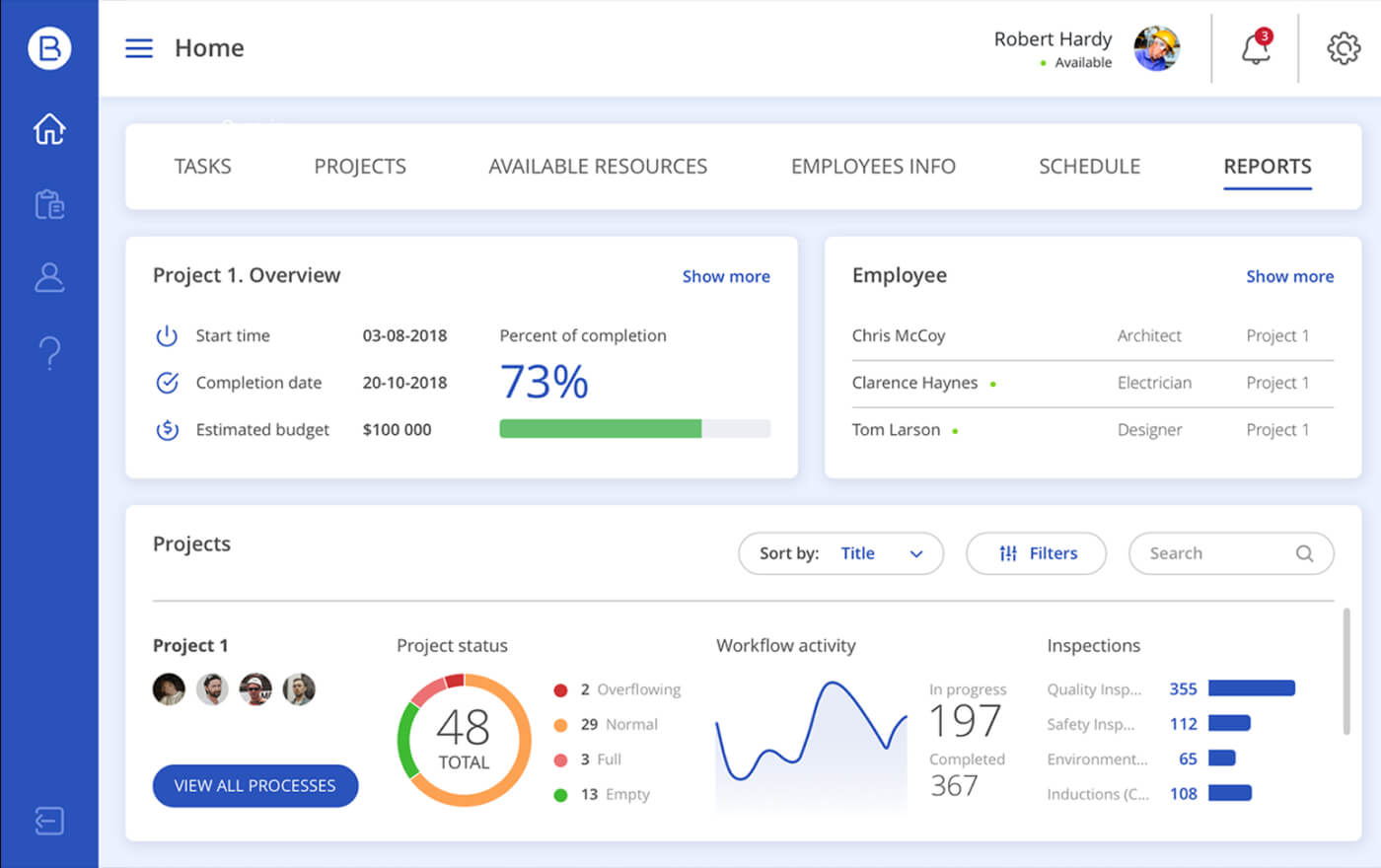Cutting-Edge Construction Management Software for Modern Builders
Cutting-Edge Construction Management Software for Modern Builders
Blog Article
Customized Building And Construction Monitoring Software Application: Optimizing Resource Allotment and Budgeting Strategies
These sophisticated tools offer a nuanced approach to optimizing source allowance and budgeting approaches, necessary elements for successful job execution. By diving into the intricacies of just how such software can improve resource allocation methods and refine budget optimization techniques, a clear pathway toward enhanced project efficiency arises.
Advantages of Tailored Software Program Solutions
Tailored software options provide a myriad of advantages to building and construction management companies looking for to boost efficiency and enhance procedures. One vital advantage is the personalization of functions to straighten with the specific demands of the building and construction sector (construction software). By tailoring software options to attend to job management, organizing, budgeting, and source appropriation, companies can maximize their process and achieve greater efficiency. In addition, tailored software permits smooth assimilation with existing systems, lowering the need for hand-operated data entry and lessening errors.
Another advantage of customized software program options is the ability to offer real-time understandings and analytics. Building monitoring companies can take advantage of data-driven decision-making to monitor project progress, determine traffic jams, and make changes quickly. This proactive strategy improves job end results and assists companies remain on track with timelines and budgets.

Improved Resource Allotment Approaches
Implementing effective resource allotment approaches is important for building administration firms to enhance project outcomes and make the most of performance. Enhanced resource allowance techniques involve tactically designating workers, tools, and products to particular jobs to make sure ideal application of sources. One crucial aspect of improved source allowance is the capacity to precisely forecast job needs and allocate resources accordingly. By leveraging construction monitoring software application that provides real-time tracking and reporting attributes, firms can dynamically adjust allowances as task requires advance, causing boosted efficiency and cost-effectiveness.
In addition, improved resource appropriation approaches allow building firms to determine and deal with prospective traffic jams or resource restrictions proactively. By performing regular analyses of resource use and efficiency metrics, managers can make data-driven decisions to redistribute resources successfully and prevent hold-ups. This positive strategy not just enhances job timelines however also minimizes the risk of spending plan overruns because of inefficient source appropriation.
Spending Plan Optimization Techniques
To accomplish optimum monetary efficiency in building and construction projects, reliable budget plan optimization techniques play a crucial function in ensuring expense control and project success. One crucial method is the facility of an in-depth task budget plan that official website allots sources based upon concern and important requirements. By clearly defining the extent of work, setting sensible expense price quotes, and continuously surveillance expenditures, building supervisors can recognize potential expense overruns early on and take restorative activities. In addition, implementing value engineering techniques can aid improve project prices without compromising high quality. This includes assessing each job part to recognize chances for expense savings while maintaining efficiency standards. Moreover, leveraging historic information and industry criteria makes it possible for building and construction supervisors to make educated decisions regarding budget plan allocations and identify locations where costs can be maximized. By incorporating these budget optimization strategies right into building administration software, job stakeholders can improve monetary preparation, resource allocation, and total budget management to drive task success and success.

Impact on Task Performance
Maximizing construction administration software can considerably enhance task performance by simplifying interaction, boosting cooperation, and assisting in data-driven decision-making. By centralizing project information, stakeholders can easily access real-time updates, lowering delays triggered by miscommunication or outdated information. Improved partnership functions make it possible for team members to function together perfectly, despite their physical area, fostering a more natural and effective work environment. Additionally, construction management software program can supply beneficial insights through information analytics, permitting project supervisors to make enlightened choices quickly and accurately.
Moreover, the automation of regular jobs such as organizing, budget tracking, and resource allowance can liberate beneficial time for project teams to concentrate see it here on critical activities, ultimately quickening task distribution. The ability to monitor project progression in real-time and recognize possible traffic jams allows positive problem-solving, avoiding issues from rising and creating hold-ups. On the whole, the influence of tailored construction management software program on job effectiveness is undeniable, offering an affordable benefit by optimizing workflows and optimizing productivity.
Future Trends in Construction Software Program
As the construction Check This Out industry remains to advance, developments in innovation are forming the future landscape of building and construction software options. One substantial fad imminent is the enhancing combination of fabricated knowledge (AI) and artificial intelligence abilities in building software. These innovations have the potential to reinvent how building tasks are handled by making it possible for predictive analytics, automated decision-making procedures, and improved project insights.
One more future pattern in building software application is the growing emphasis on cloud-based remedies. Cloud innovation offers raised flexibility, scalability, and availability for construction teams, permitting real-time partnership and data sharing across job stakeholders. This change in the direction of cloud-based software is expected to improve task efficiency, improve interaction, and boost total project outcomes.
Moreover, the surge of Structure Information Modeling (BIM) is expected to continue shaping the building software application landscape. BIM software program facilitates 3D modeling, visualization, and data management, resulting in improved job sychronisation, minimized mistakes, and boosted task end results. Embracing these future patterns in building and construction software application will be critical for companies wanting to remain competitive and drive development in the industry.
Final Thought
In final thought, tailored construction monitoring software program uses various benefits such as boosted source allotment methods and spending plan optimization methods. This software application has a significant influence on job efficiency by streamlining procedures and improving total performance (construction software). As technology proceeds to advance, future trends in building and construction software are anticipated to more maximize resource allotment and budgeting strategies for building and construction tasks
Report this page